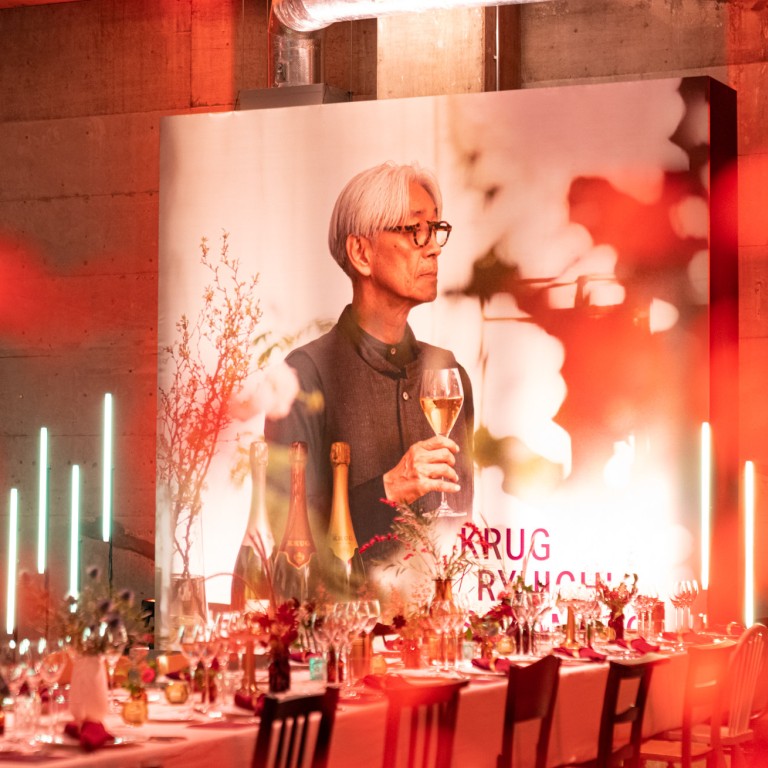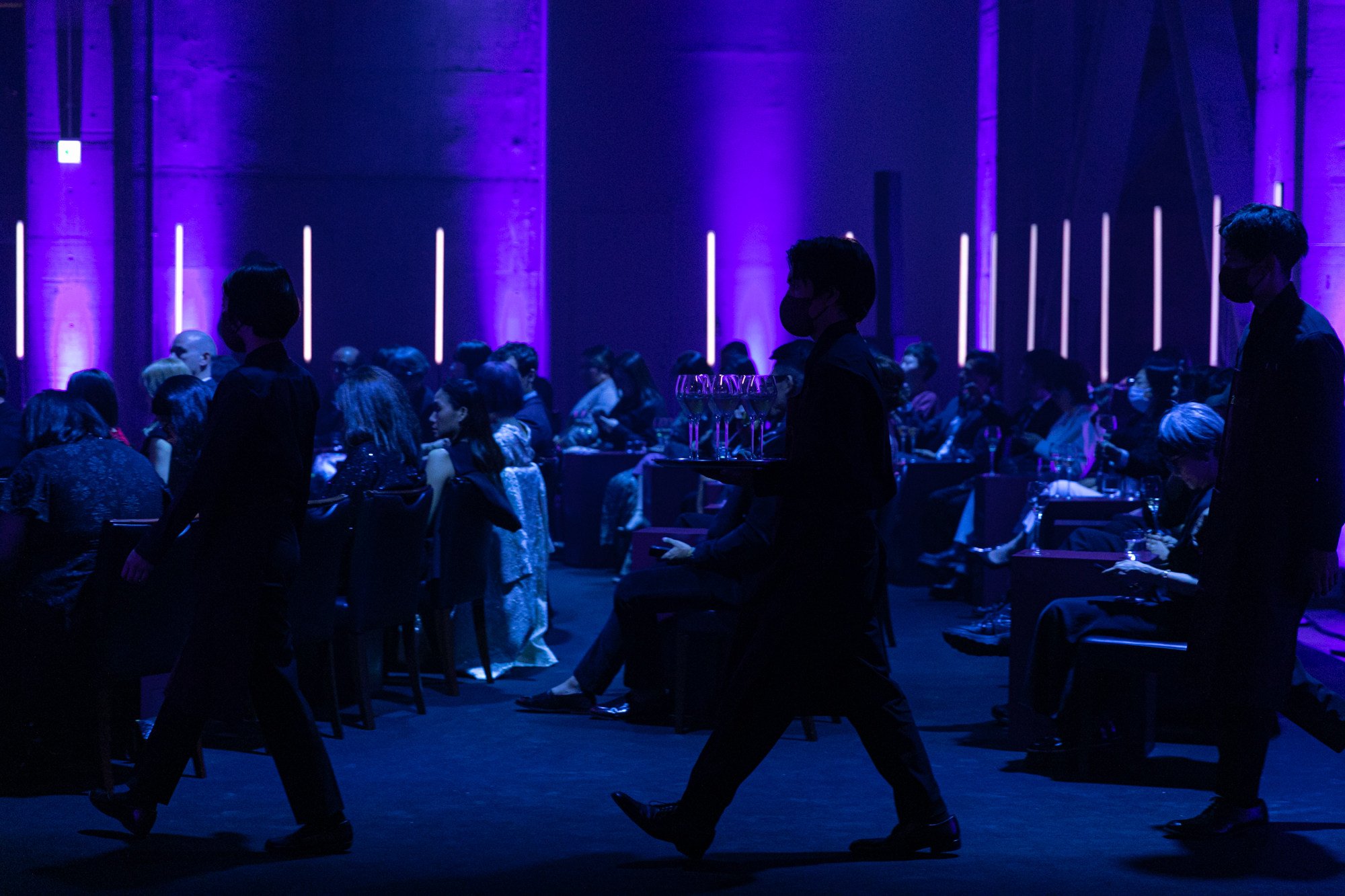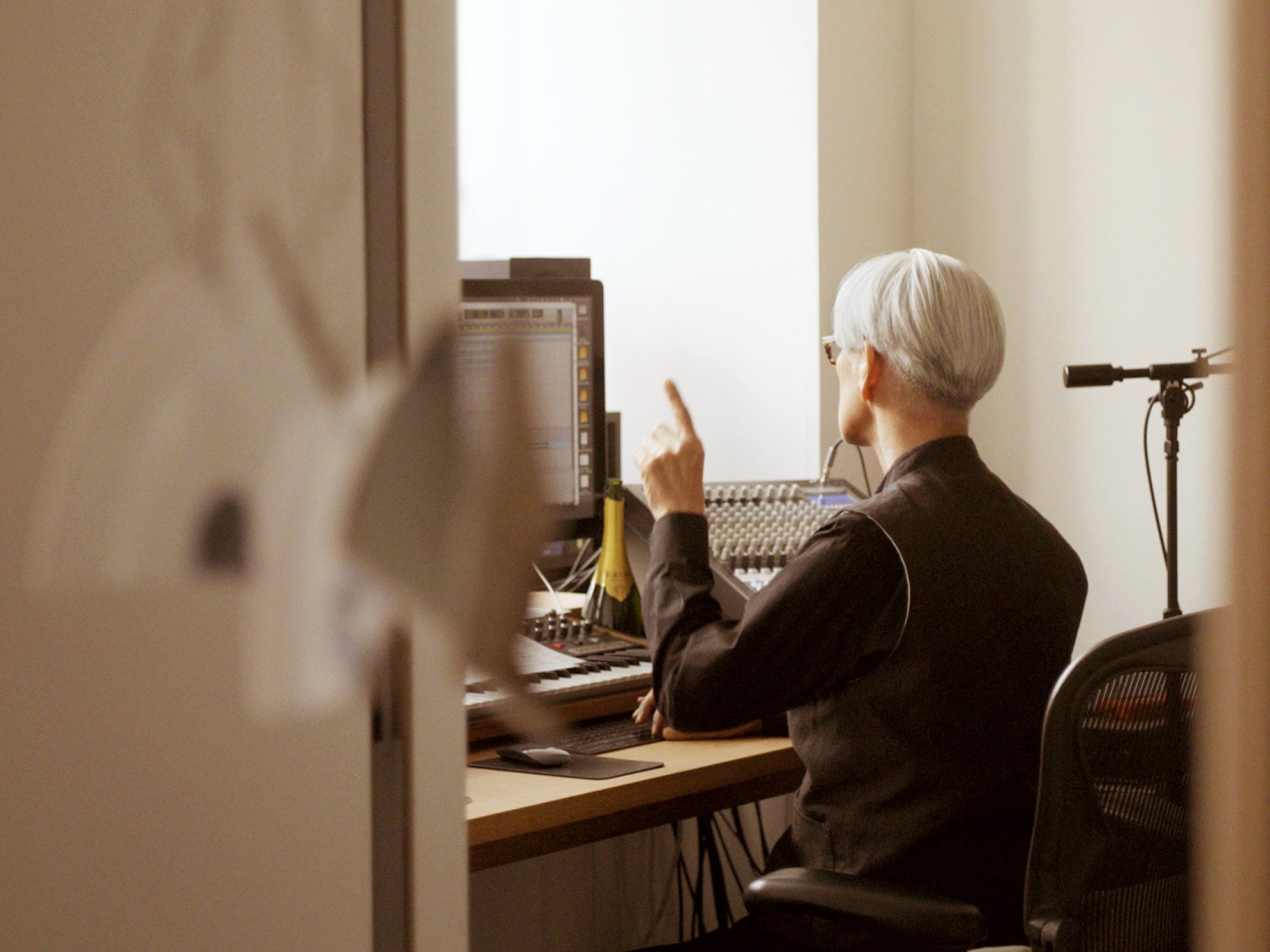
‘I believe in the sensory power of music’: Ryuichi Sakamoto on translating the essence of Krug champagne into a symphonic score
- Composer long ago proposed the idea of ‘seeing sound’, an idea realised with beams of artificial sunlight dancing to his music in a darkened Tokyo warehouse
- His ‘Suite for Krug in 2008’ sets out to capture the flavours and aromas of a notable Krug champagne vintage, and even the muffled silence of its wine cellars
How can the glint of sunlight in wine be captured in a musical note? What is the sound of bittersweet effervescence? How do you capture the muted silence of a cellar deep underground in cool earth, and transform it into a score that moves?
On a cool night this past November, I discovered the answers – or at least gained some clarity – in the depths of a warehouse in Shinagawa, Tokyo, an exposed brick building that had been transformed into a temporary music hall for one evening only, a soirée of orchestral precision and the glimmer of champagne.
The immersive event, titled “Seeing Sound, Hearing Krug”, which had earlier been held in New York and London, allowed us a glimpse into the creative process of both composer and cellar master.
At the far end of the room, a floor-to-ceiling portrait of a pensive Ryuichi Sakamoto welcomed guests; around the perimeter, an artfully arranged jigsaw of screens and wine crates told the story of the musician and his bottled muse.

Later, we were led into the main atrium, where we were surrounded by columns of light which pulsated and dissolved to the score – Suite for Krug in 2008 – that Sakamoto created, performed by 36 hand-picked musicians playing in the absence of the maestro himself.
After six years in remission since he was diagnosed with throat cancer, in 2020 Sakamoto learned he had rectal cancer.

For nearly two years the award-winning Japanese composer, musician, activist and national treasure immersed himself not only in his personal projects but also the world of Krug champagne, an unexpected source of inspiration, for a series of symphonic compositions.
The story of their collaboration began in 2019, when Sakamoto was invited to experience a music and champagne pairing by the house, where he immediately recognised the “unconventional yet very simple” idea of using sound to speak of craftsmanship.

“I studied ethnomusicology and have always believed that music can bring people together,” says Sakamoto. “Leaving behind my preconceptions, it was fascinating to discover the story of [champagne’s] creation through the angle of music.”
Throughout the pandemic, with Sakamoto in Tokyo, where he was receiving his cancer treatment, and the Krug team in France, the project was conceived, moulded and refined through remote video and endless conversations – and indeed, the slow yet methodical process of creating.
Blending sound as a cellar master might weave wines, Sakamoto set to work on a composition that would interpret the “exceptional” 2008 harvest that is spotlighted in three Krug champagnes.
The best non-vintage champagnes out there
Sakamoto sent his teams to the vineyards in Reims, Champagne, “to record the sounds of Krug”. These included the stillness of the cellars, even the chaos of creation. Meanwhile, Sakamoto, ensconced in his studio, attempted to deconstruct the champagne and apply the principles of sound to his composition.
It isn’t a new concept to Sakamoto, who proposed the idea of “seeing sound” in the 1980s. The musician previously dived deep into this, exploring the intersection of art and music as the general adviser for the Museum of Contemporary Art Tokyo’s 2012 exhibition, “Art & Music – Search for New Synesthesia”.
Now, his latest gift is a three-part orchestral composition that attempts to reinterpret and enhance the experience of enjoying champagne.

“I like the concept of making the impalpable tangible,” he says, explaining the curiosity that drives his methodology. “It is well said that we are ‘touched by music’. I deeply believe in the sensory power of music, which provokes emotions in us. I wanted to translate the flavours and aromas [of champagne] into music.”
Sakamoto’s composition is played in three parts, each movement representative of the characteristics of a Krug champagne. Every listener extracts something different from music, as they do from tasting food and wine.
For me, the introductory melody representing Clos du Mesnil 2008, a single-grape variety, took the form of a clean, crisp piano solo reminiscent of dew drops and falling rain, accented by the gentle brush of percussion to represent the fine, feathery bubbles of the wine. A free-flowing tinkling of delicate chimes completes the piece.
Reims: France’s champagne capital and hometown of Veuve Clicquot
“This champagne is elegant and chiselled, all the while silky and generous,” read Krug’s official tasting notes.
The second movement puts the “classic beauty” of Krug 2008 into sharp relief. “For this balanced and elegant champagne, I chose an ensemble of violins, cellos and other string instruments, but also added woodwinds for depth,” Sakamoto says.
The notes swirl and build from a slow and melodic opening coda to become sharp and urgent, yet “not too disruptive to break the rules, not revolutionary, but enough to be in the annals of history”, says the composer.

Lastly, the richness and fullness of Krug Grande Cuvée 164ème Édition is immortalised in the third and final movement, which Sakamoto describes as the most complex of the three.
Later, he discovered that his decision mimicked that of Krug cellar master Julie Cavil’s approach to blending champagne – starting with complexity in order to then pick out the appropriate “soloists” for the more minimalist, singular champagnes.
“The fullness of flavours and aromas of Krug Grande Cuvée 164ème Édition means that everyone finds something in it that strikes them in a personal way,” says Sakamoto. “Each experience is unique. My third movement is the same, each listener will take away something different.
Music has been my daily life for over 70 years. And I have no intention of changing that.
“You will actually find fragments of the full orchestra piece in the first and second movements,” he continues. “My idea was for the third movement to build upon them but have some commonalities.”
The cascading strings from the first movement introduce a frisson of excitement at the beginning of the third; the percussion, too, from earlier comes in again, this time more assertive and confident.
In the darkness of the warehouse, vertical beams of artificial sunlight trembled, melted and danced to the trajectory of Sakamoto’s masterpiece, rising like the columns of fine bubbles in our glasses, ephemeral by their very nature.
It’s odd. The composer’s absence was at once heavy and conspicuous; yet this bittersweet emotion dissipated as his work was conveyed through sound and light, through every flourish of the conductor’s baton and the synchronicity of the orchestra as they, too, imagined Sakamoto in their presence.
On December 11, Sakamoto released “Playing the Piano 2022”, an edited and poignant live stream that saw the composer take to the ivory keys alone for an imagined audience; many have wondered whether this may be his final concert. Would he ever work on another collaboration again?
Sakamoto’s unwavering answer is as stoic as it was emotional. “Music has been my daily life for over 70 years,” he says. “And I have no intention of changing that. I have been, and continue to be, determined to live as long as I can and make music while doing so.”

